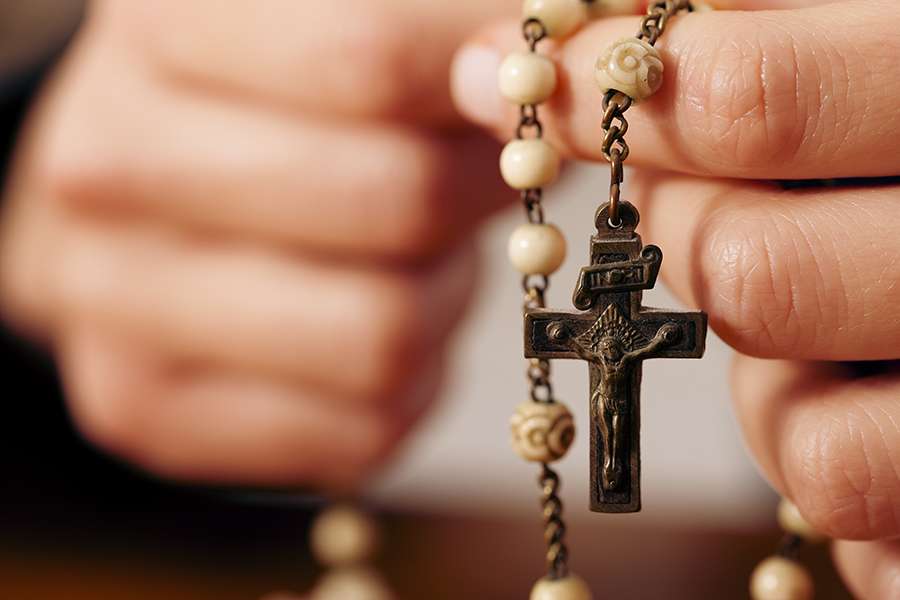
Spiritual Life
In praying the Our Father, we are united to Jesus
September 17, 2020
In our study of the Catechism on “Christian Prayer,” we have come to the end of Section One. Section Two contains an exposition of the Our Father. But before speaking about the Our Father in detail, the Catechism delves into Jesus’ own prayer in the Garden of Gethsemane. How are the two connected?
The Catechism quotes Luke 11:1, saying, “Jesus ‘was praying at a certain place, and when he ceased, one of his disciples said to him, ‘Lord, teach us to pray, as John taught his disciples.’” In response, the Lord entrusts to his disciples and to his Church the fundamental Christian prayer” (CCC, no. 2759). How had Jesus been praying at the beginning of this passage? We find some clues in his prayer in the Garden.
“Then Jesus went with them to a place called Gethsemane, and he said to his disciples, “Sit here, while I go yonder and pray” (Mt 26:36). He went aside by himself, as the Scriptures tell us he often did. (See Mk 1:35, 6:46, Lk 6:12, 9:18, etc.) In Matthew’s Gospel, shortly before teaching his disciples the Our Father, Jesus instructed them, “But when you pray, go into your room and shut the door and pray to your Father who is in secret; and your Father who sees in secret will reward you” (Mt 6:6). He gave an example for them to imitate.
When he teaches them to pray, he begins, “Our Father.” Jesus often spoke about and to his Father. Now he invites us to address God as Father as well. “We can invoke God as ‘Father’ because he is revealed to us by his Son become man and because his Spirit makes him known to us” (CCC, no. 2780).
The second truth these first two words reveal is that even when we pray alone, we pray in communion with the whole Church. We do not pray, “My Father,” but “Our Father.” The Catechism calls the Lord’s Prayer “the Prayer of the Church” (no. 2770). Earlier it noted, “Even when it is lived out ‘in secret,’ prayer is always prayer of the Church” (no. 2655).
This communal aspect of Christian prayer continues the mission and prayer of Jesus. “He includes all men in his prayer, for he has taken on humanity in his incarnation, and he offers them to the Father when he offers himself. Jesus, the Word who has become flesh, shares by his human prayer in all that ‘his brethren’ experience; he sympathizes with their weaknesses in order to free them. It was for this that the Father sent him” (no. 2602).
That brings us back to Gethsemane. “Christian Tradition rightly calls this prayer the ‘priestly’ prayer of Jesus. It is the prayer of our high priest, inseparable from his sacrifice, from his passing over (Passover) to the Father to whom he is wholly ‘consecrated’” (no. 2747).
“By entering into the holy name of the Lord Jesus we can accept, from within, the prayer he teaches us: ‘Our Father!’ His priestly prayer fulfills, from within, the great petitions of the Lord’s Prayer: concern for the Father’s name; passionate zeal for his kingdom (glory); the accomplishment of the will of the Father, of his plan of salvation; and deliverance from evil” (no. 2750).
The Our Father is truly the Lord’s Prayer. He taught it, but first he lived it. He is both the master and the model (CCC, no. 2765). When we pray it, we are not reciting dead words, but uniting ourselves with the Word made flesh.
Connie Rossini is a member of St. Peter Parish in Omaha. She is the author of “The Q&A Guide to Mental Prayer,” now available at amazon.com, and five other books on Catholic spirituality.